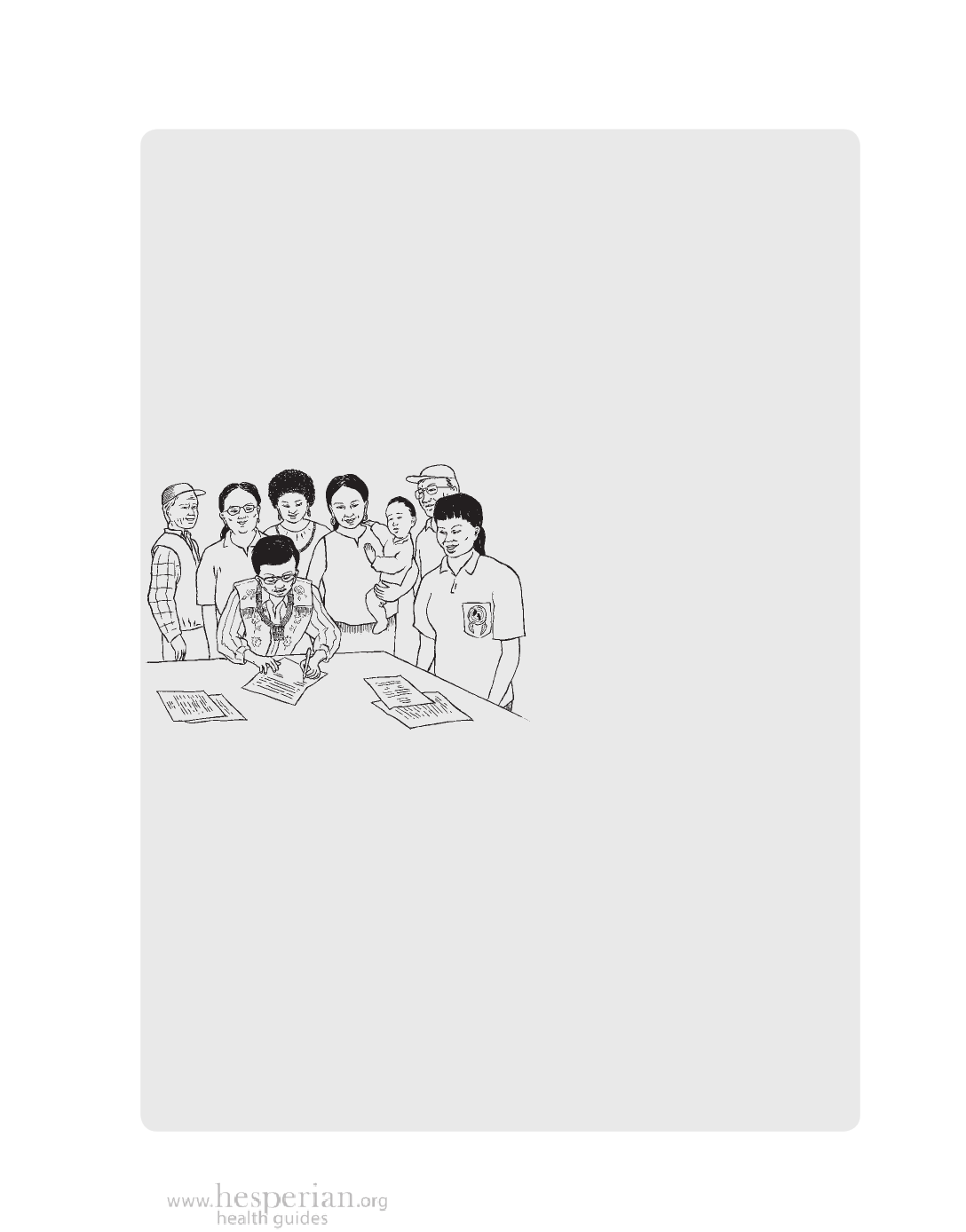
Large Dams Damage Health 173
Intertribal partnership protects the Yukon River
In Alaska and the Yukon Territory at the border of the United States and
Canada, the mighty Yukon River flows 2300 miles (3700 kilometers) through
many towns and villages. Because the river is threatened by contamination,
60 indigenous communities signed a treaty agreeing to work as partners to
keep the river clean for future generations. They formed an alliance called the
Yukon River Intertribal Watershed Council.
The Watershed Council did not begin by trying to clean up the entire river.
They started with small projects and clear goals. One of their first programs
was to ban the use of plastic bags in towns along the river. By banning
plastic bags, people along the river learned that taking personal
responsibility could make a big difference in protecting the watershed.
After the plastic bag ban
succeeded, the communities
began cleaning up discarded
batteries, oil, and broken down
cars. Every community in the
watershed built a landfill and
set up a bin to collect batteries,
keeping poisons out of the soil
and water. Then they worked to
convince all the small airlines,
shipping companies, and military
bases in the area to dispose of old
batteries, cars, and oil safely.
Now, Yukon tribal governments are improving their sewage systems and
landfills, and creating programs to recycle and reuse trash. They teach young
people to test the water for pollution and to recognize signs of contamination
in order to prevent it.
The Yukon River Intertribal Watershed Council built partnerships with
tribal, state, local, and national governments in Canada and the United
States, and with environmental and watershed groups, funding agencies, and
outside advisers. By bringing many groups together, the Watershed Council
was able to make a plan that included everyone in the watershed, and to
gather enough resources to get the work done.
By taking small steps at first and then larger steps, the Watershed
Council encourages change that is slow, but effective. One member of the
Council said, “When I was a child I drank water straight from the river.
In 50 years we will be able to drink from the river again.”
A Community Guide to Environmental Health 2012